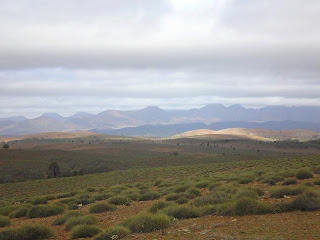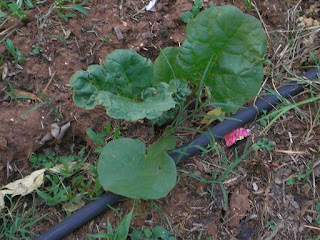
Today I wrote and posted a letter to my partner as part of A Bun Can Dance's letter writing swap. I can never say no to the prospect of writing and receiving mail, as there is nothing better than opening the letterbox at the end of the day and finding within it an envelope filled with stories and news from a friend or a family member (or sometimes even a complete stranger!).
In today's world of electronic conveniences - email, instant messaging, Facebook, MySpace + blogs, text and picture messaging with cell phones, Skype/VOIP - letter writing no longer appears to be the preferred method of correspondence. It is too slow, too time-consuming, too difficult to bother with. In addition, with postage rates always increasing, the humble letter is fast becoming an expensive past-time.

I see this as a huge shame. I love writing and receiving letters. It was my Nanna who convinced and inspired me to write my first "penpal" letter when I was about 7 years old. My "penpal" and I had met once at her grandparents' farm and we had exchanged addresses; she was the same age as I was and we shared similar interests and lifestyle. But if it had not been for my Nanna's encouragement I doubt I would have ever completed that first letter. To this day, my "first penpal" and I are still in touch; over the past 21+ years we have continued to write one another, through changing schools, towns and cities, University, and new careers. We now live, once again, in the same part of the world (the Flinders Ranges), albiet a few hours apart - plenty of distance for continuing our written correspondence.
My Nanna is a letter-writer, which probably doesnt come as much of a surprise considering that she belongs to a generation before the existence of computers and cell phones. To this day, she still makes the time and effort to write to family and friends. I, too, share correspondence with my Nanna, and this is one of my favourite treasures.
I hate the telephone. I find it interruptive and annoying. If I want to tell a friend about my day, share my news or ask after their well-being, I much prefer to do it in the form of a letter. Ideally they would be hand-written, on nice stationery, in a decorative envelope, with little surprises to fill the weight limit, to make it all the more exciting and intriguing for the receiver.

There was once a time when just about everyone wrote letters, and when the duty of the postal service was just that: To provide a postal service, not an outlet for giftwares and a place to pay the bills. No, the postal service existed solely to ensure that a piece of mail reached its destination, whether it be in wind, rain or sunshine. It may have taken days, weeks, or even months for a single letter to arrive at its destination, but its receiver would have eagerly awaited its delivery, upon which a reply would have been promptly penned.
How wonderful it would have been to belong to this time, when the written word held so much importance. A time before telephones and computers, when news from a loved-one came in the form of a little paper bundle...
When was the last time you wrote a letter? Is it something that you do often, rarely, or never? I wouldnt be surprised if there are people out there, perhaps those belonging to the generation following mine, that have never penned a real letter in all their life and used the post to send it. What a magnificently simple treat they have missed out on: The curiousity in its arrival, the anticipation of tearing open the envelope to reveal its contents, the excitement of reading a loved-one's news, the pleasure of their enquiries.

Sunday is the day I like to dedicate to letters, and today I wrote two. I hope mysterycreature, my partner for A Bun Can Dance's letter writing swap, is as excited by the prospect of receiving my mail as much as I am of hers. It will be our first correspondence, perhaps our only correspondence, which simply makes it all the more wonderful.









































.JPG)







